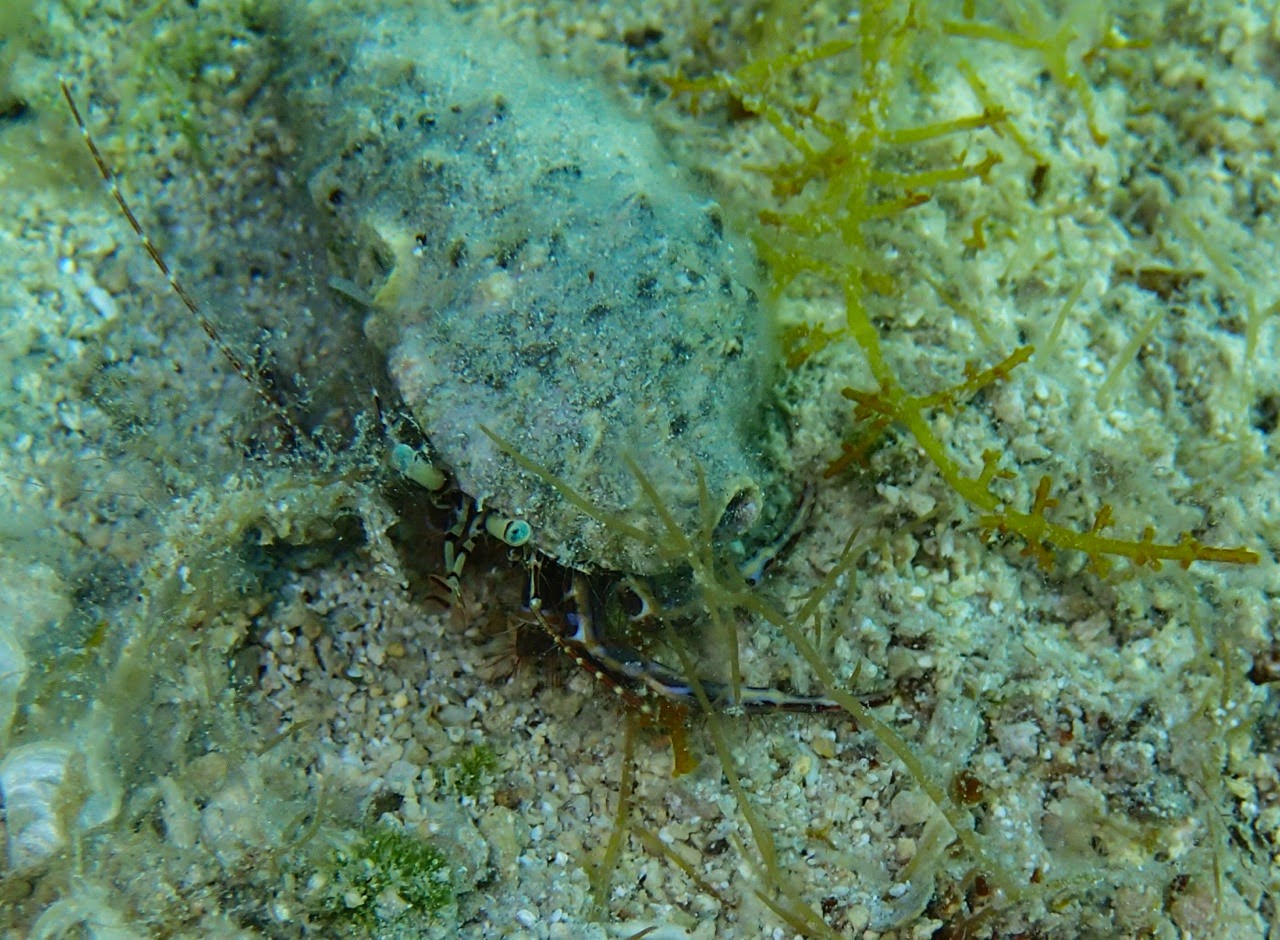And we're back to under water photos again :-)
The evening of Monday, 11th of August, was really pretty. We saw rabbits on the island and a big owl was flying by, probably hoping to get a rabbit. We had a very peaceful and calm night at Tri sestrice.
In the morning, after a swim and a breakfast, we had to sail off.
Our plan was to sail as far North as we could, and make a stop for snorkelling at couple of small islands South of Silba. They are a bit away from any inhabited islands, so I hoped there would not be many tourists there and the snorkelling would be good. But even before we reached them, we saw they were quite steep, and indeed the chart showed that the water around them was rather deep and there was no good anchorage. We sailed closer, took a close look and decided to sail on to Olib.
We anchored in a wide sandy bay on West side of Olib. I wasn't expecting to find much in the water, but was pleasantly surprised. It had the same feeling as Marie Galante (you can see it here and here ) in Caribbean - from the outside I could see very clear water, plenty of sea cucumbers, but not much more. But then under the water it was totally beautiful.
Almost right under our boat was this car tire, full of empty shells. I knew that the octopus couldn't be far away.
And as I looked closer, I found her, squeezed between the tire and the shells. If she keeps eating so many shells, soon there will not be enough space for her in the tire.
The shells were obviously there for longer time, a Trumpet anemone (Marmornata morska vetrnica) was growing among them.
There were also some Tunicates near, the White sea-squirts (Bradavičasti kozolnjaki), in company of Yellow sponges (Spužve žveplenjače).
... and this one lives in Murex shell (v Čokatem voleku).
These are the eggs of one of the Nudibranches (Golega polža) - it looks like a delicate lace.
This was one of my best discoveries - the Long-snouted seahorse (Dolgonosi morski konjiček). This was the second one that I saw in nature in my life.
Tried to get better photo from different perspective, but the poor guy tried to disappear into the ground, he was clearly not happy with me swimming so close, so I took another photo, said thank you and left him alone.
And another pretty blue eyed Hermit crab.
I found a big octopus, don't know if this was the one from the tire.
Next morning was calm and sunny, water was so clear, I could see the octopus castle from the boat. And of course I took some photos.
After the breakfast I went snorkelling again, I didn't want to miss the opportunity to snorkel in such a great place. I found another type of tunicate, it is Rožnati plaščar.
When I was taking the photo of this Potato sponge (Ledvičaste spužve), I noticed the anemone.
It is probably the Daisy anemone (Sončna vetrnica), it was too hidden beneath the rock to get better photo and be sure.
As I was swimming around, a big group of fish started to follow me. Maybe they thought I'm on the hunt for food and they could get some crumbs.
I think this is another Tunicate, it could be Nagubani kozolnjak. It is hard to tell though, because it is so overgrown with algae.
This is one of the Tube worms, the Twin fan worm (Dvoperjaničar).
This is one of my favourite fish, the Redmouth Goby (Rdečeusti glavač).
I finally found a Nudibranch - this one is called Platydoris argo (Ploščati perjaničar). After this one I found three more of the same kind, I learned what to look for.
This is a Murex shell (Čokati volek), alive and well. Not just a shell inhabited by Hermit crab.
I have no clue, what this is. Maybe some kind of eggs. They were tied around the tube of the Mediterranean tube worm (Spalancanijevega cevkarja).
When I was swimming back towards the boat, I saw this little beauty swimming in the water. I have to take a lot of photos to get a couple of decent ones, since both of us were swimming up and down in the water. It is probably a Tubellaria (Bradavičasti vrtinčar).
Despite the beautiful anchorage, clear water and great snorkelling, we had to move on. I was sorry, it was such a pretty place and great weather, the summer was finally back. But we had to be on Krk the next day, and according to weather forecast the bad weather was coming from the South in the night, so we would not be able to stay in this anchorage anyway.
Shortly after the noon we sailed off, towards North again.





















































